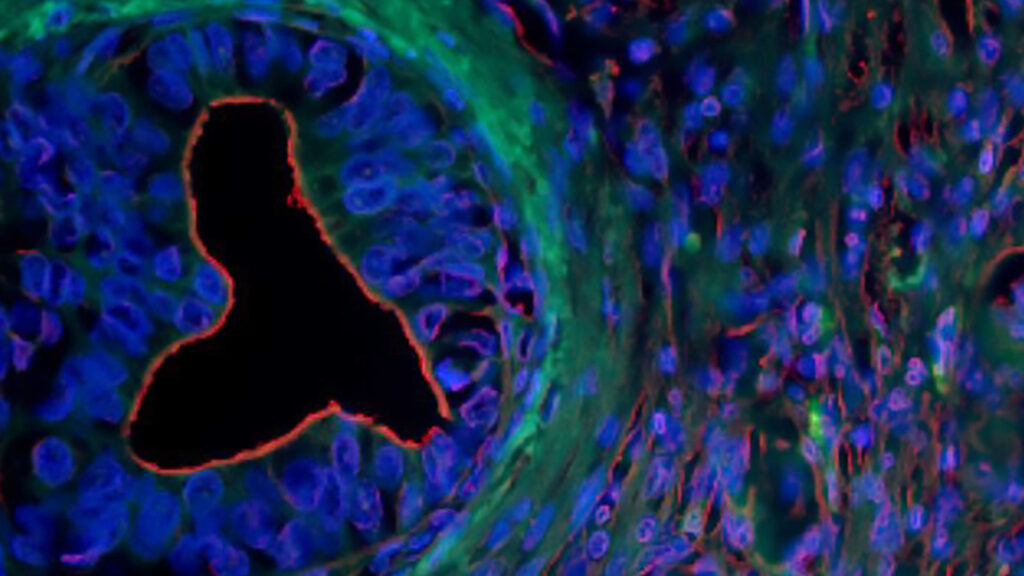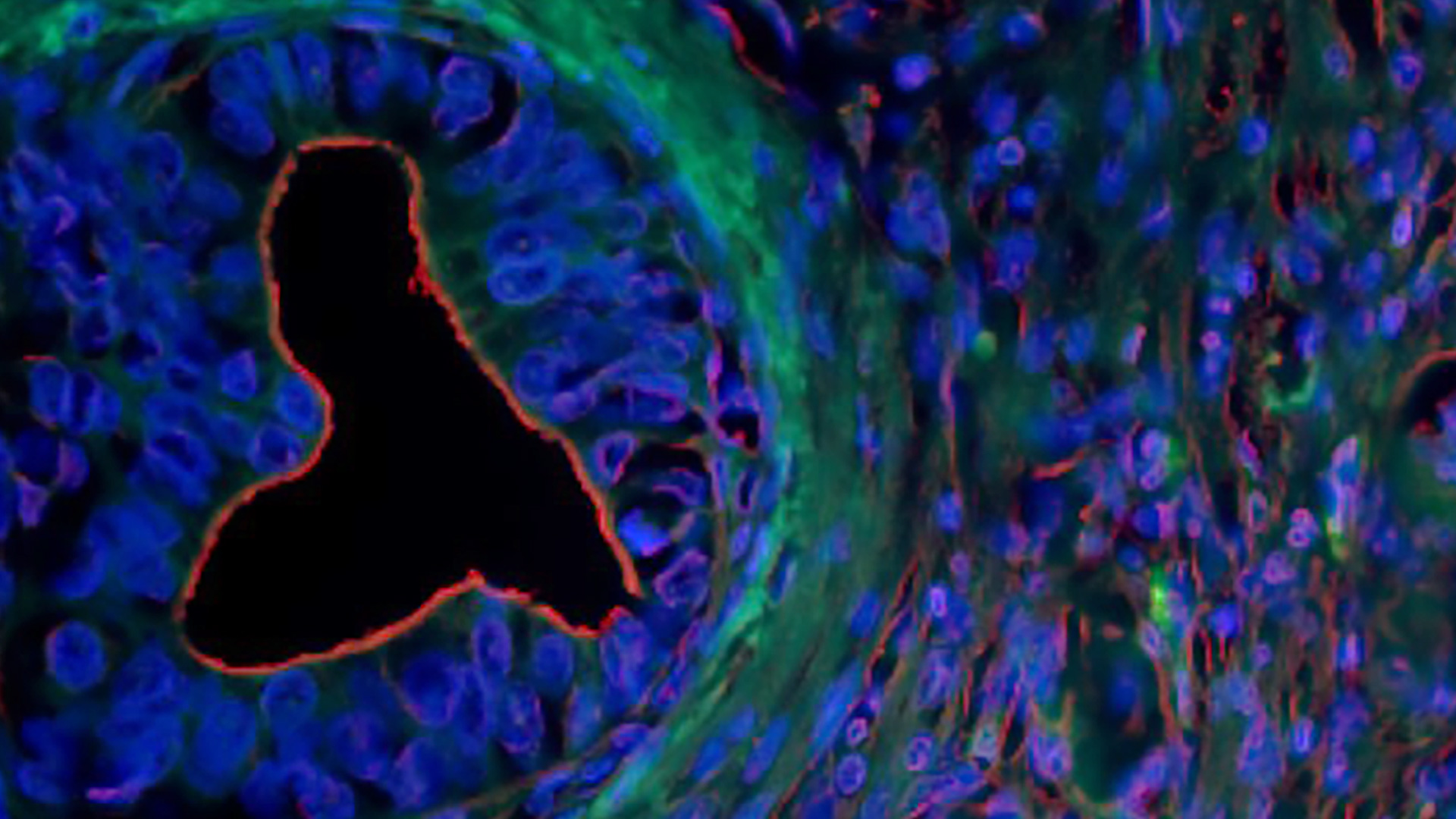
The cancer targeting molecule was discovered through SRI’s FOX Three Molecular Guidance System.
Pancreatic cancer is the fourth leading cause of cancer death in the U.S., with more than half of the patients diagnosed with metastatic disease, which has a five-year survival rate of just over 3%. But for patients diagnosed with localized disease, in which the tumor is confined to the pancreas, the five-year survival rate improves dramatically, to 44%. The remarkable difference in prognoses highlights the need for improved therapies and early detection methods.
Raising hopes for both, researchers in SRI’s Biosciences division have identified a new carbohydrate biomarker, known as Neu5Gc-Sialyl Lewis A, that is found in a range of solid tumors, including pancreatic cancer. Using SRI’s proprietary FOX Three™ platform, researchers have discovered a new molecular guidance system (MGS) — a peptidic ligand that binds to this biomarker on cancer cells — allowing for the evaluation of Neu5Gc-Sialyl Lewis A as a pancreatic cancer biomarker, as well as the use of the MGS as a cancer targeting agent.
The cancer targeting molecule can be used both diagnostically and therapeutically. The MGS can be tagged to imaging agents that can be identified using medical imaging to spot tumors at the earliest stage or can even be bound to cancer-killing drugs and immunotherapies that go directly to tumor cells to wipe out the disease. The upshot: a targeting system that raises the possibility of earlier detection for pancreatic cancer, while potentially opening new therapeutic avenues.
Early warning signs
“To our knowledge no other group has targeted Neu5GC-Sialyl Lewis A in this way,” explains Shelby Knoche, a post-doctoral researcher in SRI’s Biosciences division. “What makes this molecular guidance system more advantageous is that healthy humans produce very little Neu5Gc-Sialyl Lewis A naturally. We don’t see this specific biomarker in healthy tissue very often, yet it is quite common in pancreatic cancer cells due to altered metabolism. The MGS can therefore be used to deliver drugs specifically to pancreatic cancer tissue without side-effects.”
Knoche and colleagues have shown that Neu5Gc-Sialyl Lewis A is significantly expressed in both metastatic and local pancreatic cancers. In fact, she says, it has the potential to identify precancerous cells before they become full-blown cancer — the earliest of early detection systems. “With Neu5Gc-Sialyl Lewis A we can even detect precursor lesions of pancreatic cancer,” she says. “For these people who stand a good chance of survival, we can improve their odds by identifying a tumor sooner.”
Clinical potential
SRI currently utilizes the MGS to treat pancreatic cancer via an immunotherapy called TALLTM technology. TALL combines the Neu5Gc-Sialyl Lewis A targeting technology in a liposomal formulation, yielding a therapy that can both seek out pancreatic cancer cells with high specificity, then turn on the body’s immune system to destroy them.
“We’re in pre-clinical stages with TALL,” Knoche says, “We are moving toward an Investigational New Drug application, an important precursor to starting a clinical trial.”
Knoche and colleagues will present their study at the annual meeting of Society for Immunotherapy of Cancer, in San Diego, November 1 – 5, during the first week of National Pancreatic Cancer Awareness Month.



